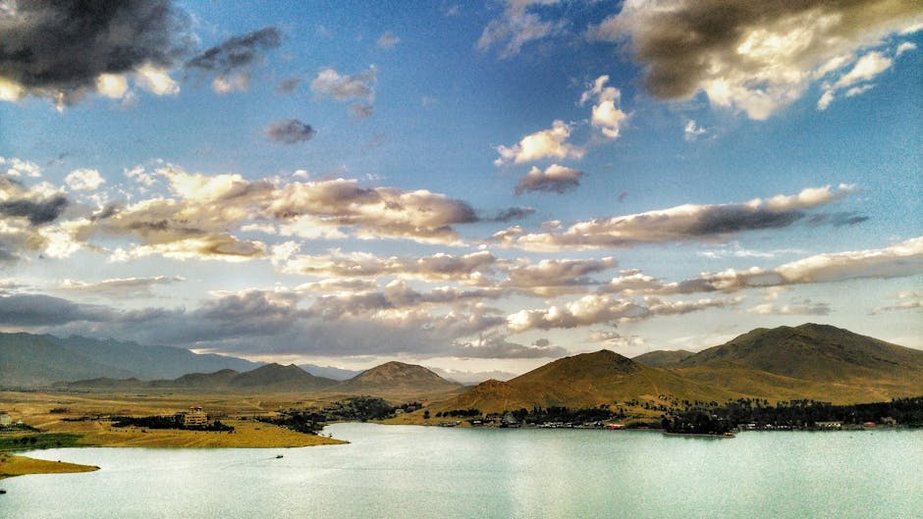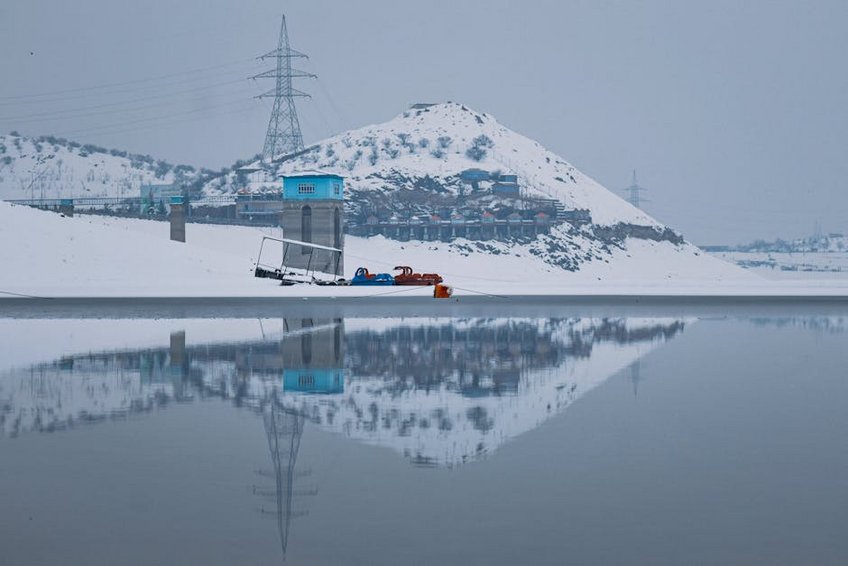Exploring the Stunning Afghanistan Bamiyan Valley Landscapes
Imagine standing amidst towering cliffs where ancient civilizations carved monumental Buddha statues into the rock faces, surrounded by sweeping valleys that change colors with the shifting sunlight. The Afghanistan Bamiyan Valley landscapes offer one of the most unique travel experiences on Earth, blending profound historical significance with breathtaking natural beauty. You’ll discover a region where the Hindu Kush mountains create a dramatic backdrop for fertile plains, traditional villages, and archaeological treasures that tell stories of the Silk Road’s golden age. While security concerns require careful planning, the raw, untamed beauty of these Afghanistan Bamiyan Valley landscapes continues to draw adventurous travelers seeking destinations far from the typical tourist trail. The valley’s elevation creates a pleasant climate for much of the year, with clear skies framing the spectacular rock formations and remaining niches where the giant Buddhas once stood. Your journey here connects you with centuries of Buddhist heritage, Islamic culture, and the resilient spirit of local Hazara communities who maintain their traditions amidst challenging circumstances. From sunrise casting golden hues across the cliffs to stargazing in remarkably clear night skies, every moment in these Afghanistan Bamiyan Valley landscapes feels like discovering a hidden chapter of human history written in stone and earth.
Afghanistan Bamiyan Valley Landscapes – Essential Information
Understanding the geographical and historical context of the Afghanistan Bamiyan Valley landscapes will significantly enhance your appreciation of this remarkable destination. Located in central Afghanistan’s Bamiyan Province, the valley sits at approximately 2,500 meters (8,200 feet) above sea level, creating a high-altitude environment with distinct seasonal variations. The region served as a crucial Buddhist monastic center from the 2nd century until the Islamic conquest in the 9th century, with the famous Buddha statues—destroyed in 2001—standing as testament to this rich heritage. You’ll find the landscape dominated by the Koh-e-Baba mountain range, with the Bamiyan River flowing through the valley and creating fertile agricultural land that contrasts dramatically with the surrounding arid cliffs. The cultural landscape was designated a UNESCO World Heritage Site in 2003, recognizing its outstanding universal value despite the damage to its most famous monuments. Modern Bamiyan town serves as the provincial capital and primary base for exploration, offering basic infrastructure alongside incredible views of the historical sites and natural formations that define these Afghanistan Bamiyan Valley landscapes.
Historical Significance and Background – What You Need to Know
- The Bamiyan Valley was a major Buddhist center along the Silk Road between the 2nd and 9th centuries, with monastic complexes carved directly into the cliffs where monks lived, studied, and created incredible art.
- Two monumental Buddha statues—55 meters and 38 meters tall—stood for approximately 1,500 years before their destruction in 2001, with their empty niches remaining powerful symbols of cultural heritage and loss.
- Archaeological evidence shows human settlement dating back thousands of years, with the region successively influenced by Persian, Greek, Buddhist, Islamic, and Mongol civilizations, creating a unique cultural tapestry.
- Budget travelers should expect costs of approximately $1,500-2,500 USD for a week-long trip, including basic guided tours, shared accommodation, and simple meals, though independent budget travel is not recommended due to security concerns.
- Mid-range options typically cost $3,000-5,000 USD per person for comprehensive tours including better accommodation, experienced English-speaking guides, and included transportation within Afghanistan.
- Luxury or specialized tours focusing on the Afghanistan Bamiyan Valley landscapes can exceed $7,000 USD, offering enhanced security measures, expert archaeological guides, and more comfortable accommodation options where available.
- UNESCO World Heritage Centre – Cultural Landscape and Archaeological Remains of the Bamiyan Valley
- U.S. Department of State – Afghanistan Travel Advisory
- BBC News – Afghanistan’s Bamiyan Buddhas: What happened after the destruction?
Geographical Features and Climate – Key Details
The Afghanistan Bamiyan Valley landscapes showcase remarkable geological diversity that you’ll appreciate throughout your visit. The valley itself stretches approximately 15 kilometers (9 miles) long and 3 kilometers (1.8 miles) wide, nestled between the Koh-e-Baba mountains which reach heights over 5,000 meters (16,400 feet). You’ll encounter dramatic color variations in the rock formations—from reddish-brown iron-rich layers to pale limestone cliffs—created by millions of years of geological activity. The high altitude results in significant temperature variations between day and night, with summer daytime temperatures reaching pleasant 20-25°C (68-77°F) while winter brings heavy snowfall and temperatures dropping to -15°C (5°F) or lower. The Bamiyan River, fed by mountain snowmelt, supports agriculture in the valley floor where you’ll see traditional irrigation systems and crops like potatoes, wheat, and barley growing in striking contrast to the surrounding arid landscape.
Afghanistan Bamiyan Valley Landscapes – Planning Your Trip
Careful planning is essential for experiencing the Afghanistan Bamiyan Valley landscapes safely and meaningfully, given the region’s unique challenges and rewards. You’ll need to consider security conditions, seasonal accessibility, and cultural sensitivities when organizing your journey, with most international travelers visiting as part of organized tours or with experienced local guides. The political situation requires monitoring travel advisories from your home country, with many governments currently advising against all but essential travel to Afghanistan. For those who do visit, the experience offers unparalleled opportunities to witness cultural heritage and natural beauty in a region receiving few foreign visitors. Your budget should account for higher costs due to security measures, specialized guides, and limited infrastructure, with comprehensive travel insurance that includes medical evacuation being absolutely essential. Packing requires thoughtful preparation for both cultural respect and practical comfort, including modest clothing that covers arms and legs, sturdy walking shoes for exploring uneven terrain, and all necessary medications since medical facilities are extremely limited in the region.
Best Time to Visit Afghanistan Bamiyan Valley Landscapes
Timing your visit to the Afghanistan Bamiyan Valley landscapes requires balancing weather conditions, security considerations, and seasonal activities. The ideal window falls between May and early October when temperatures are mildest and mountain passes are accessible, with July and August offering the warmest days for extended exploration. Spring (April-May) brings beautiful wildflowers and greener landscapes but can include unpredictable weather with occasional rain showers. Autumn (September-October) provides comfortable temperatures and stunning foliage colors in the valley, though days grow shorter as winter approaches. Winter months from November through March see heavy snowfall that can make road travel difficult or impossible, while temperatures frequently drop below freezing, limiting outdoor activities. Regardless of season, you’ll want to monitor current security conditions closely and be prepared for rapid changes, as political stability directly impacts accessibility to these remarkable Afghanistan Bamiyan Valley landscapes.
Budget Planning and Costs
Essential Preparation Checklist
Proper preparation significantly enhances both safety and enjoyment when exploring the Afghanistan Bamiyan Valley landscapes. You’ll need to secure necessary visas well in advance through Afghan embassies, a process that can take several weeks and requires detailed documentation including invitation letters if traveling with a tour company. Comprehensive travel insurance with medical evacuation coverage is non-negotiable, as local healthcare facilities cannot handle serious emergencies. Pack modest, conservative clothing that covers arms and legs, with warm layers for cool evenings even in summer months. Bring all prescription medications in original packaging with documentation, plus a basic medical kit including treatments for altitude sickness, digestive issues, and minor injuries. Learn basic Dari or Hazaragi phrases to facilitate communication, and research cultural norms regarding photography, dress, and interactions with local communities to ensure respectful engagement throughout your journey.

Afghanistan Bamiyan Valley Landscapes – Top Attractions and Activities
Your exploration of the Afghanistan Bamiyan Valley landscapes will reveal both world-famous historical sites and lesser-known natural wonders that together create an unforgettable travel experience. The empty niches of the Great Buddhas remain the most iconic sight, with the larger western niche standing 55 meters (180 feet) tall and the eastern niche measuring 38 meters (125 feet), both offering powerful reminders of the region’s rich Buddhist heritage. You can climb stairs to vantage points providing spectacular views across the valley, particularly during sunrise and sunset when the light transforms the cliff faces into glowing canvases of color. Beyond the Buddha niches, the surrounding cliffs contain hundreds of caves that once housed monastic communities, many still featuring remnants of Buddhist wall paintings that survived centuries of exposure. The Shar-e-Gholghola citadel ruins atop a hill in the valley center offer panoramic views and a tangible connection to the 13th century Mongol invasion that destroyed the city, while the more recent Shar-e-Zohak red city ruins provide another fascinating historical layer to these multifaceted Afghanistan Bamiyan Valley landscapes.
Must-See Highlights in Bamiyan Valley
Several key sites demand attention when experiencing the Afghanistan Bamiyan Valley landscapes, starting with the Buddha niches where you can appreciate the scale of the destroyed statues and imagine their original grandeur. The Bamiyan Cultural Centre offers context about the region’s history and ongoing preservation efforts, with exhibits explaining the archaeological significance of the area. Band-e-Amir National Park, Afghanistan’s first national park located approximately 80 kilometers (50 miles) west of Bamiyan, features stunning turquoise lakes formed by natural travertine dams that create breathtaking contrast with the surrounding arid mountains. Within the valley itself, the Dragon Valley (Darra-e-Ajdar) showcases fascinating rock formations and local legends, while the ancient city of Gholghola provides insight into the medieval settlement patterns that characterized these Afghanistan Bamiyan Valley landscapes before the Mongol invasions transformed the region.
Hidden Gems and Local Favorites
Venturing beyond the main tourist sites reveals the true depth of the Afghanistan Bamiyan Valley landscapes, starting with the less-visited eastern section of the valley where traditional agricultural practices continue largely unchanged for centuries. The village of Fuladi offers a glimpse into rural Hazara life, with opportunities to interact with local families and learn about their distinctive culture and traditions. For the adventurous, hiking trails lead to higher elevations with spectacular valley overviews, though you should always travel with a knowledgeable local guide due to uneven terrain and potential security concerns. The Kakrak Valley, located a short distance from the main Bamiyan Valley, contains another standing Buddha statue and additional cave complexes that receive fewer visitors, providing a more intimate experience of the region’s archaeological heritage. During your explorations, keep an eye out for the intricate karez irrigation systems—underground channels that have sustained agriculture in these arid Afghanistan Bamiyan Valley landscapes for over two thousand years.
Afghanistan Bamiyan Valley Landscapes – Practical Travel Information
Navigating the practical aspects of visiting the Afghanistan Bamiyan Valley landscapes requires understanding the current infrastructure limitations and security protocols that shape the travel experience. Most international visitors arrive via Kabul International Airport, then travel to Bamiyan by road—a journey of approximately 180 kilometers (112 miles) that takes 5-7 hours depending on security checkpoints and road conditions. While some travelers attempt this route independently, hiring a reputable driver with experience navigating the area is strongly recommended for both safety and convenience. Accommodation options in Bamiyan town range from basic guesthouses to a few more comfortable hotels, though amenities are generally simple with intermittent electricity and limited hot water availability. The town offers essential services including markets, simple restaurants, and communication facilities, though internet access can be unreliable. When moving around the valley itself, walking provides the most immersive experience for exploring the Afghanistan Bamiyan Valley landscapes, while hired vehicles or donkeys may be necessary for reaching more distant sites, especially given the altitude that can make extended walking challenging for those unaccustomed to high elevations.
| Accommodation Type | Features and Amenities | Price Range (USD per night) |
|---|---|---|
| Basic Guesthouses | Shared bathrooms, simple meals included, limited electricity | $15-30 |
| Mid-Range Hotels | Private bathrooms, generator power, basic restaurant | $40-80 |
| Tour Group Accommodation | Enhanced security, English-speaking staff, organized activities | $100-200 (included in tour packages) |


